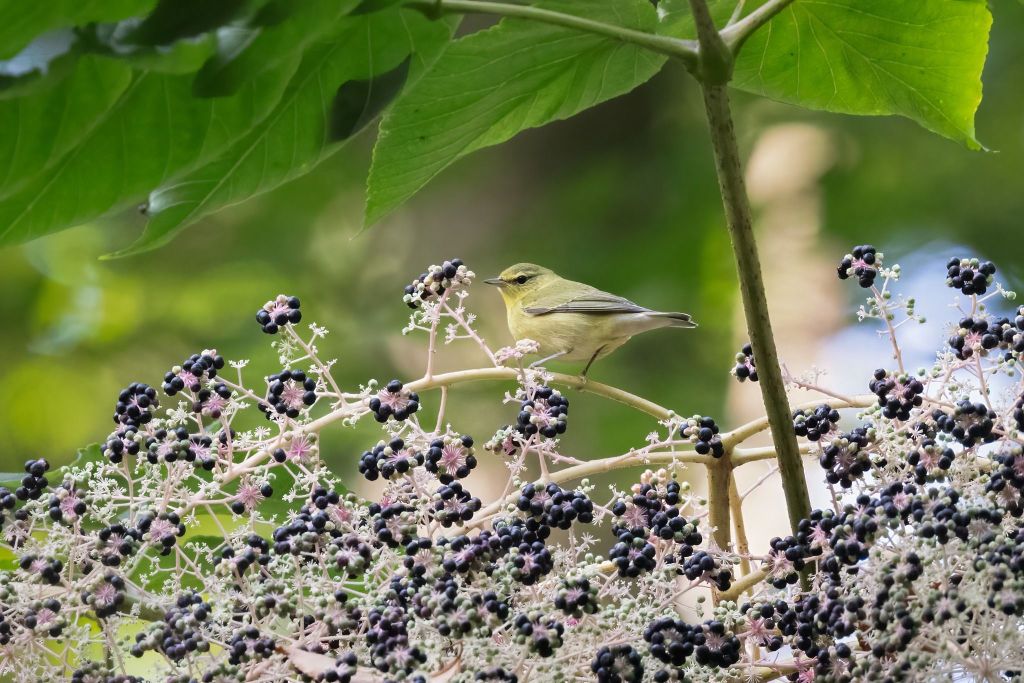
2 October 2023
In September birders lurk near devil’s walking stick in Frick Park because the plants attract birds on migration. Crawling with tiny insects and full of fruit, devil’s walking stick is often swarmed with visiting warblers, cedar waxwings and robins. But is it really devil’s walking stick (Aralia spinosa)? Or is it the invasive look-alike Japanese angelica (Aralia elata)? Or even worse, is it a hybrid?
I didn’t know about this possibility until Dave Brooke posted photos of two warblers on devil’s walking stick. The first was a Tennessee warbler, at top, followed by a Cape May warbler, below, that landed on the same perch in the same pose just 25 seconds later.
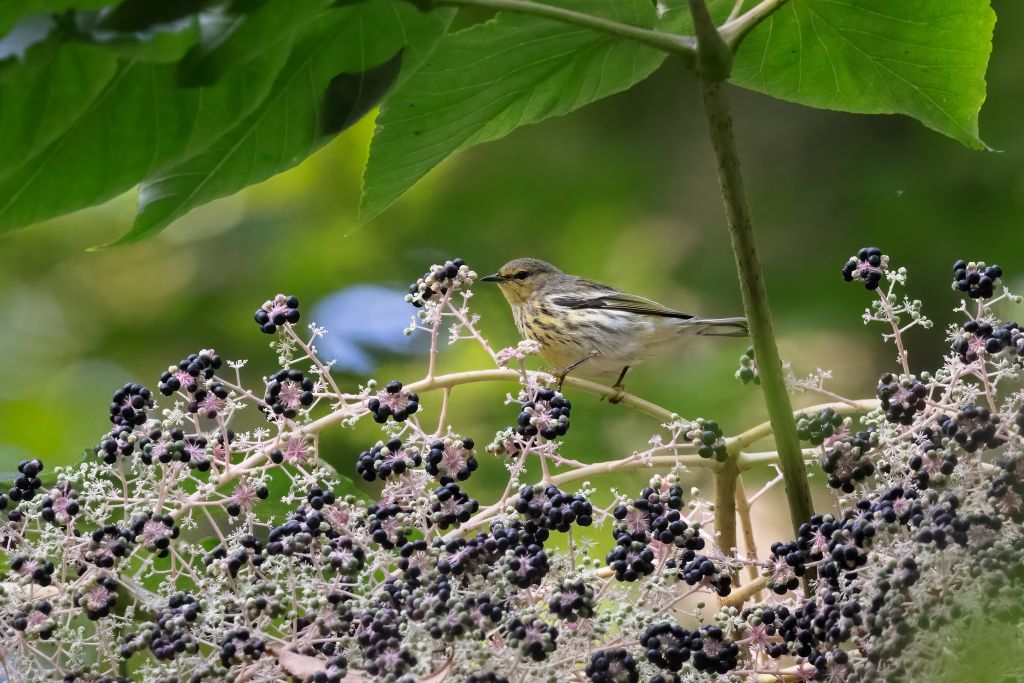
Anne Swaim responded to Dave’s post saying “Probably Aralia elata, the Japanese Angelica. Great bird attractant (but really invasive.) Same genus as the native Devil’s walking stick.”
Native to eastern Russia, China, Korea and Japan, Japanese angelica (Aralia elata) was brought to the U.S. as an ornamental plant. It’s well known in eastern Pennsylvania and New York state because those areas are outside Aralia spinosa‘s native range. Pittsburgh is on the border though, so I always assumed I was looking at the native plant.
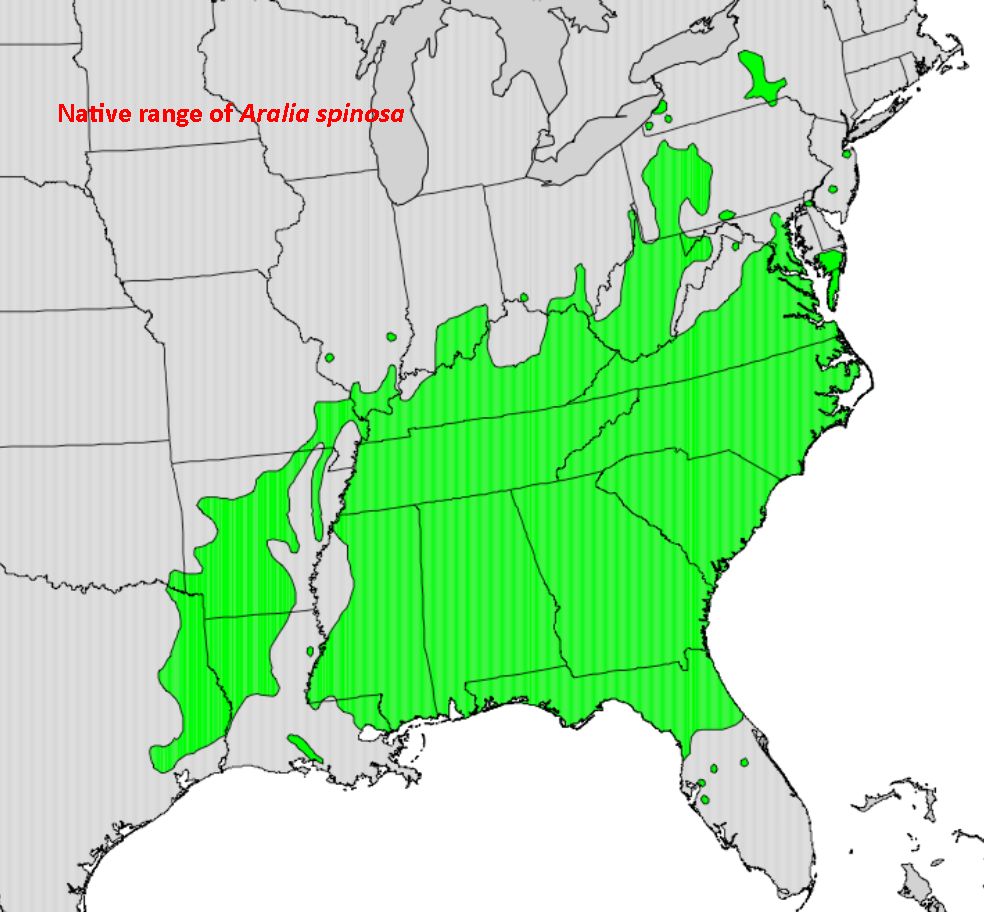
It’s so hard to tell them apart that New York Botanical Garden posted this guide to invasive look-alikes. Here’s a screenshot from the Aralia sp pages:
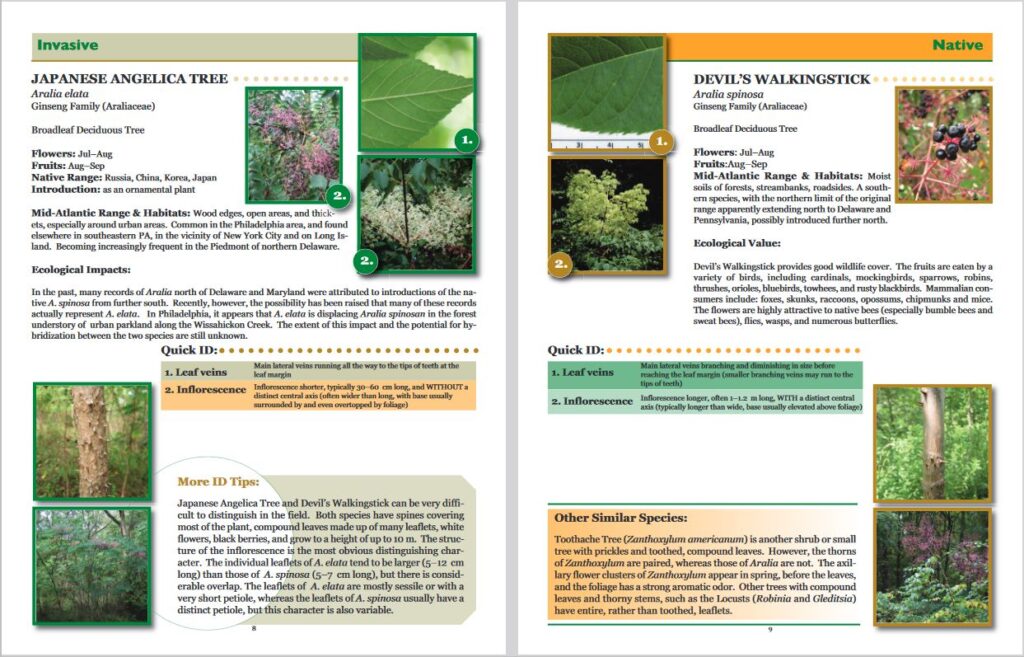
Their Quick ID is helpful for non-botanists like me.
Quick ID of Aralia elata (invasive alien):
- Leaf veins: Main lateral veins running all the way to the tips of teeth at the leaf margin.
- Inflorescence: Inflorescence shorter, typically 30–60 cm long, and WITHOUT a distinct central axis (often wider than long, with base usually surrounded by and even overtopped by foliage).
Quick ID of Aralia spinosa (native):
— Mistaken Identity? Invasive Plants and Their Native Look-Alikes, A Guide for the Mid-Atlantic (posted by NY Botanical Garden)
- Leaf veins: Main lateral veins branching and diminishing in size before reaching the leaf margin (smaller branching veins may run to the tips of teeth)
- Inflorescence: Inflorescence longer, often 1–1.2 m long, WITH a distinct central axis (typically longer than wide, base usually elevated above foliage).
I tried to identify the plants at Frick by looking at the leaves but it’s very hard to do. The easiest way is by looking at the inflorescence — the tower of flowers.
Japanese angelica’s (Aralia elata) inflorescence basically lies flat. It does not have a central stem and the leaves may cover some of the flowers. Here’s Japanese angelica at Frick.
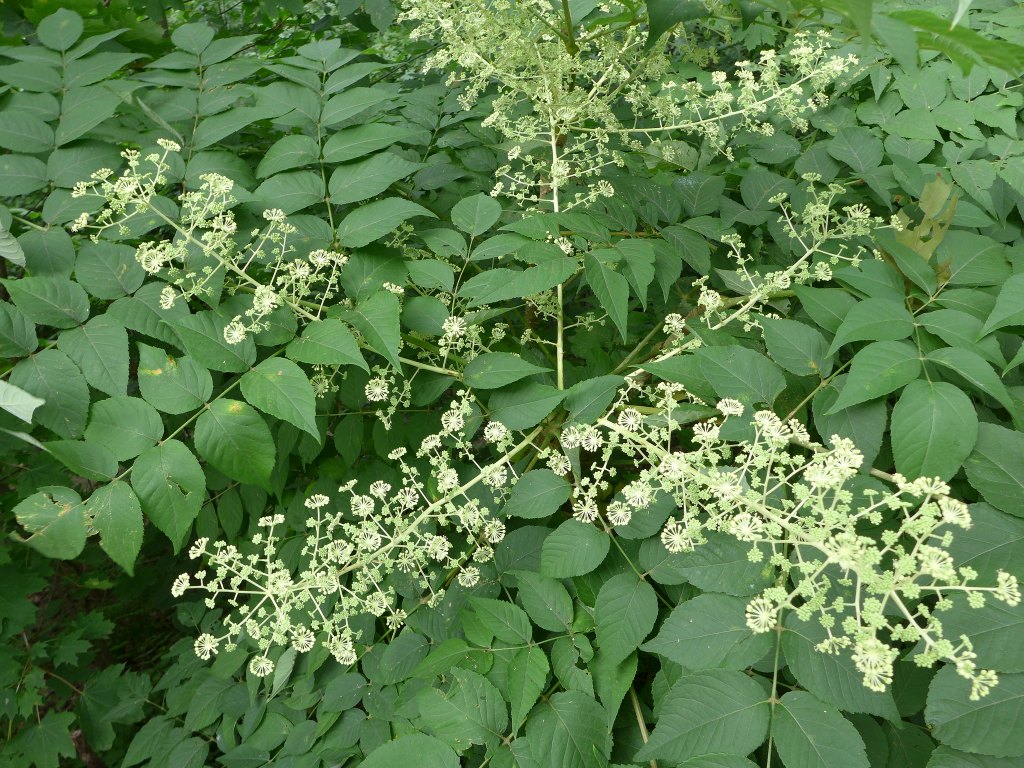
Devil’s walking stick’s (Aralia spinosa) inflorescence stands tall above the leaves on a central stalk.
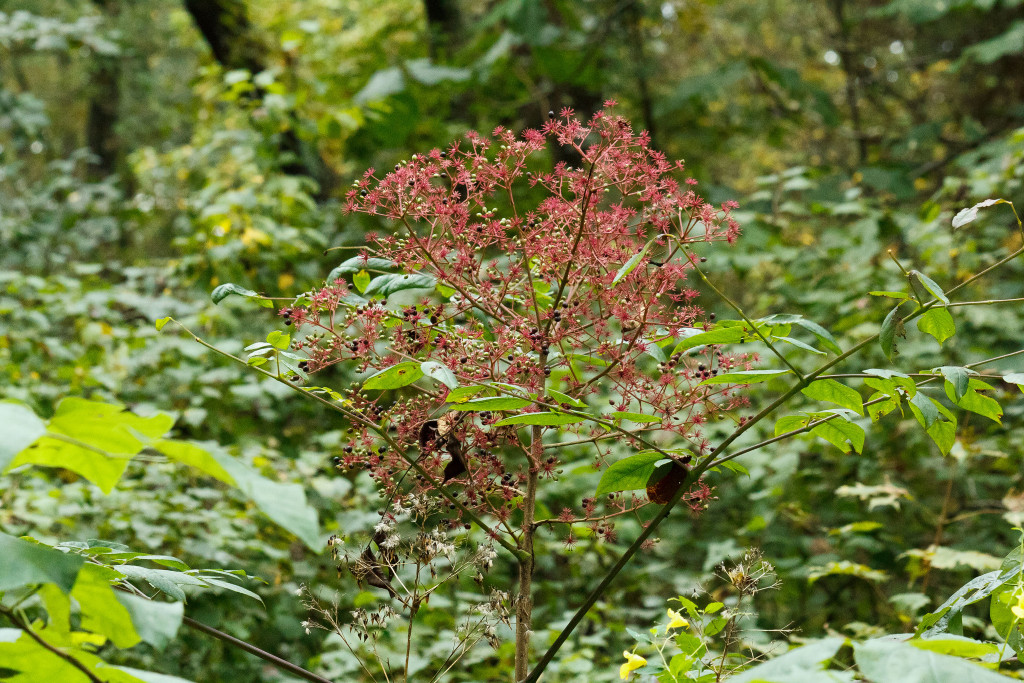
Now I’ve started looking at all the Aralias and asking: Which one are you?
You might know of a stand of a devil’s walking stick you’d like to examine too. To figure out its identity download the Mistaken Identity guide at nybg.org ==> https://www.nybg.org/files/scientists/rnaczi/Mistaken_Identity_Final.pdf
Also see Tom Potterfield’s Flickr album with photos of both species.
Meanwhile, for the sake of the warblers I am deciding not to get excited that these plants are alien. The birds love them so much and I love the birds so …
p.s. Read more about Japanese angelica’s invasive qualities at the Brandywine Conservancy: Invasive Species Spotlight: Japanese Angelica Tree (Aralia elata). Here’s where it occurs in the U.S. Yes, in Allegheny County. Wonder who planted it.
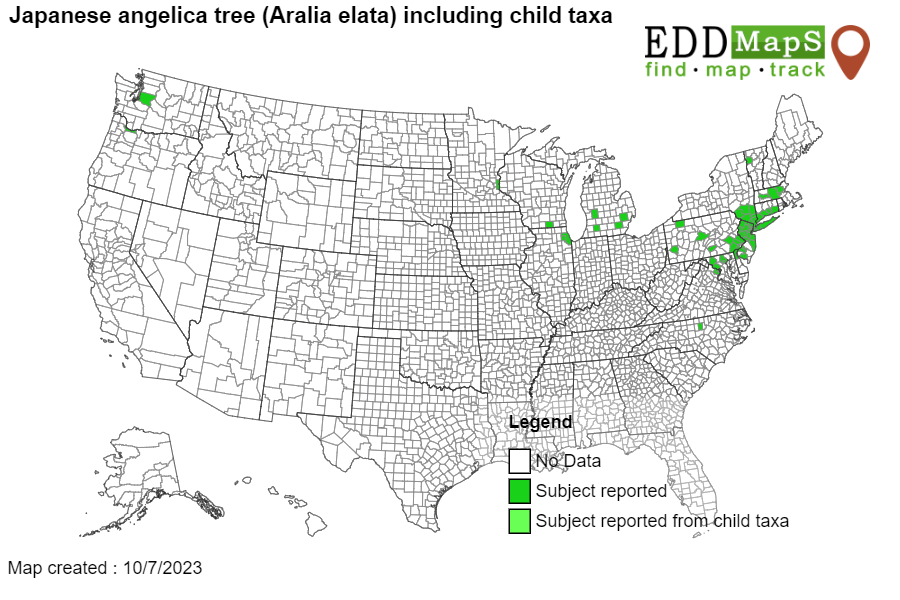
(photos by Dave Brooke, nybg.org, Kate St. John and Tom Potterfield. Click the links in the captions to see the originals)